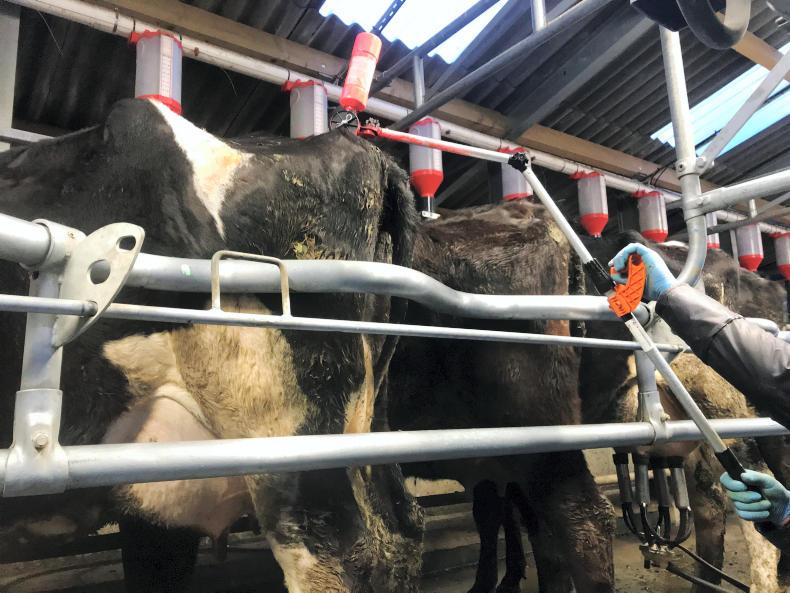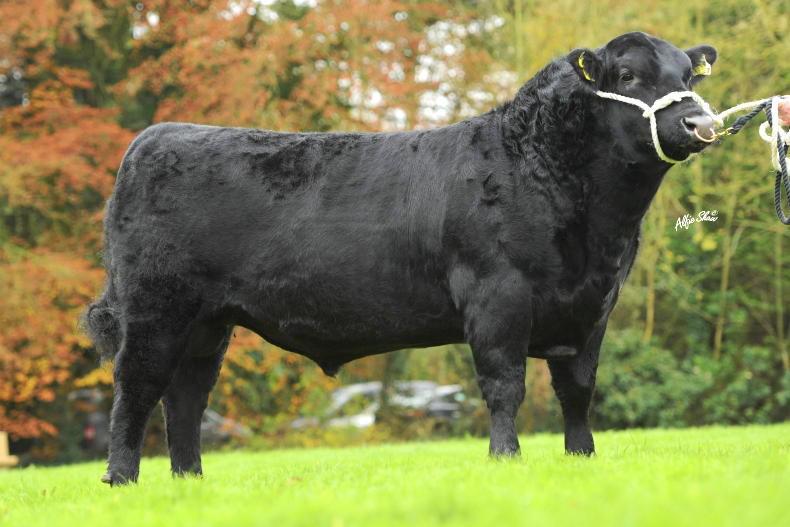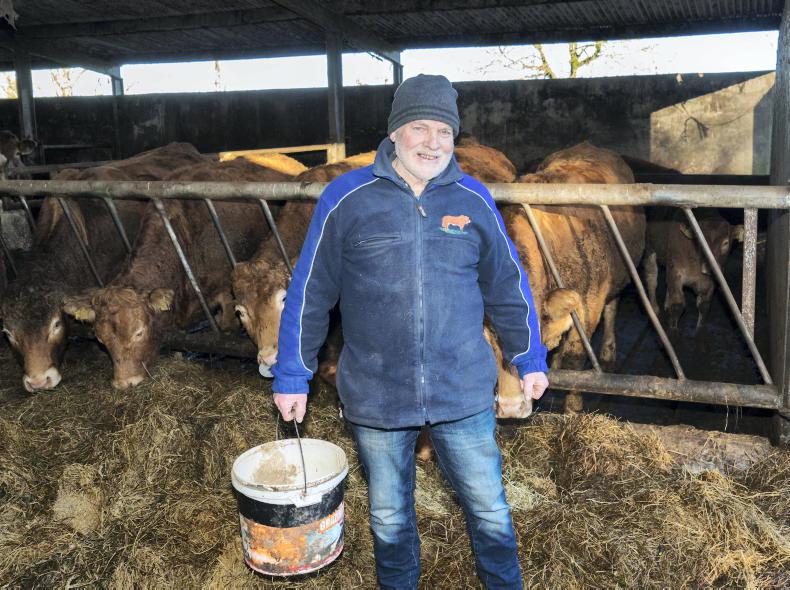The period of the breeding season where artificial insemination is used is probably the most stressful period of the year on dairy and suckler farms. While calving is physically draining, breeding is physically and mentally draining because the farmer has to do the work in order to get the cow in calf. Whereas if the cow is in calf, she will have that calf at a time and location of her own choosing.
First things first, how do you identify a cow in heat? There are a number of obvious signs, but there are also other signals that on their own may not indicate a heat, but combined they might add up to a cow being on heat.
Think of heat detection as a nine-piece jigsaw of the Mona Lisa painting. One of the pieces has her head. If you only had that piece and no others you’d be 100% certain that the jigsaw was of the Mona Lisa.
However, if that piece was missing, but you had most other pieces, you would still be certain that the jigsaw was of the Mona Lisa.
The cow could still be on heat even if she hasn’t been seen standing
Think of the head as being like a cow in standing heat. It’s a definitive sign of heat. Now, think of the other jigsaw pieces as being like the other signs of heat.
The cow could still be on heat even if she hasn’t been seen standing – the other signs all help to build the picture.
When you know the normal it will be a lot easier to know the abnormal
The average duration of a heat is around 14 to 15 hours but the range is from two to 30 hours. A cow will come in heat every 18 to 24 days until she goes pregnant. Being able to identify the signs of heat is a great skill to have. It’s a skill that comes with experience and like all skills it is something that can be learned. The first step is to know the signs of normal behaviour. When you know the normal it will be a lot easier to know the abnormal.
Oestrus (heat), is a spectrum and in any herd there will be cows coming into heat, on heat and coming off heat.
It’s important to take the time to refresh yourself on the signs of heat and, as importantly, train new members of staff or family members on the various different signs of heat.
Being able to identify cows in heat, measure grass and budget money are all key skills needed to be a successful farmer.
Signs associated with each period
Cows coming into heat
(duration 6-10 hours):
Will not stand to be mounted.Smell other cows.Attempt to mount other cows.Display a moist, red and slightly swollen vulva.Are restless and bellow a lot.Cows on heat (duration 2-30 hours
- average 15 hours):
Stand to be mounted – hair and skin rubbed off crest of tail.Are nervous, excitable, and restless.May mount other cows.May stand with back arched and tail in air.Spend less time than usual grazing.Display moist, red vulva. Clear mucus discharge from vulva. May hold milk.Frequently change from their usual order coming into the parlour – often lead the herd from the paddock or lag behind .Cows after heat
Will not stand to be mounted. Smell other cows. Clear mucus discharge from vulva.Because the duration of a heat is so short, farmers should use heat detection aids to help them identify the cows on heat. Aids don’t eliminate the requirement for observations, but they help to build the picture.
Tail paint is the most widely used and probably the simplest, cheapest and definitely one of the most effective heat detection aids available. Tail paint should be applied in a 2in by 9in strip from the top of the tail head back.

Tailpainter device.
The big issue with tailpaint is the work involved in painting cows and keeping the paint topped up.
With this in mind, a new device called Tailpainter was developed by Cork farmer and AI technician Liam O’Keeffe. The device allows the farmer to stay in the pit and paint the cows without having to stand up on the rails.
The device is made in Ireland and the new and improved model is a novel way to correctly and accurately apply tail paint.
To apply tail paint once costs around 20c/cow. If the paint was topped up five times over a three-week period, the full cost would be €1/cow.

Cows with tailpaint applied using the Tailpainter device.
Scratch cards and kamars are an alternative to tail paint. They work well and many farmers use them instead of tail paint, particularly for heifers who often don’t have the physical weight and pressure to rub off tail paint.
Cost varies depending on the type of scratch card purchased and the quantity, but the range in price is from 75c to €2.70 per scratch card.
Vasectomised bulls are another popular method of heat detection, particularly on heifers or towards the middle to end of the AI breeding period with cows.
If the vasectomised bulls are let out too soon, there is a risk that they could get tired too quickly, so most farmers will leave them out with the herd after at least three weeks of breeding have been completed.
This is particularly important if older vasectomised bulls are used as they may not spend much time with the cow
There is the option of attaching a chin ball marker to the vasectomised bulls, with the ink from the marker used to identify the animals that were mounted.
This is particularly important if older vasectomised bulls are used as they may not spend much time with the cow.
The big downside is the cost
Automated heat detection aids are gaining in popularity, with an ever-increasing selection of devices available. The big advantage of automated heat detection is that it does the work of heat detection for the farmer.
The big downside is the cost, with some products costing as much as €17,000 plus VAT for a 100-cow herd.
The higher-cost devices include health monitoring as well as heat detection. More basic heat detection only models cost around €3,000 for a 100-cow herd.
The thing to watch with automated heat detection aids is the annual service charge for data connectivity and storage and the warranty on devices. There are some reports of batteries on collars wearing out faster than they should.
Read more
Sexed semen: can it be more profitable?
Dairy management: grass growth ready to take off
The period of the breeding season where artificial insemination is used is probably the most stressful period of the year on dairy and suckler farms. While calving is physically draining, breeding is physically and mentally draining because the farmer has to do the work in order to get the cow in calf. Whereas if the cow is in calf, she will have that calf at a time and location of her own choosing.
First things first, how do you identify a cow in heat? There are a number of obvious signs, but there are also other signals that on their own may not indicate a heat, but combined they might add up to a cow being on heat.
Think of heat detection as a nine-piece jigsaw of the Mona Lisa painting. One of the pieces has her head. If you only had that piece and no others you’d be 100% certain that the jigsaw was of the Mona Lisa.
However, if that piece was missing, but you had most other pieces, you would still be certain that the jigsaw was of the Mona Lisa.
The cow could still be on heat even if she hasn’t been seen standing
Think of the head as being like a cow in standing heat. It’s a definitive sign of heat. Now, think of the other jigsaw pieces as being like the other signs of heat.
The cow could still be on heat even if she hasn’t been seen standing – the other signs all help to build the picture.
When you know the normal it will be a lot easier to know the abnormal
The average duration of a heat is around 14 to 15 hours but the range is from two to 30 hours. A cow will come in heat every 18 to 24 days until she goes pregnant. Being able to identify the signs of heat is a great skill to have. It’s a skill that comes with experience and like all skills it is something that can be learned. The first step is to know the signs of normal behaviour. When you know the normal it will be a lot easier to know the abnormal.
Oestrus (heat), is a spectrum and in any herd there will be cows coming into heat, on heat and coming off heat.
It’s important to take the time to refresh yourself on the signs of heat and, as importantly, train new members of staff or family members on the various different signs of heat.
Being able to identify cows in heat, measure grass and budget money are all key skills needed to be a successful farmer.
Signs associated with each period
Cows coming into heat
(duration 6-10 hours):
Will not stand to be mounted.Smell other cows.Attempt to mount other cows.Display a moist, red and slightly swollen vulva.Are restless and bellow a lot.Cows on heat (duration 2-30 hours
- average 15 hours):
Stand to be mounted – hair and skin rubbed off crest of tail.Are nervous, excitable, and restless.May mount other cows.May stand with back arched and tail in air.Spend less time than usual grazing.Display moist, red vulva. Clear mucus discharge from vulva. May hold milk.Frequently change from their usual order coming into the parlour – often lead the herd from the paddock or lag behind .Cows after heat
Will not stand to be mounted. Smell other cows. Clear mucus discharge from vulva.Because the duration of a heat is so short, farmers should use heat detection aids to help them identify the cows on heat. Aids don’t eliminate the requirement for observations, but they help to build the picture.
Tail paint is the most widely used and probably the simplest, cheapest and definitely one of the most effective heat detection aids available. Tail paint should be applied in a 2in by 9in strip from the top of the tail head back.

Tailpainter device.
The big issue with tailpaint is the work involved in painting cows and keeping the paint topped up.
With this in mind, a new device called Tailpainter was developed by Cork farmer and AI technician Liam O’Keeffe. The device allows the farmer to stay in the pit and paint the cows without having to stand up on the rails.
The device is made in Ireland and the new and improved model is a novel way to correctly and accurately apply tail paint.
To apply tail paint once costs around 20c/cow. If the paint was topped up five times over a three-week period, the full cost would be €1/cow.

Cows with tailpaint applied using the Tailpainter device.
Scratch cards and kamars are an alternative to tail paint. They work well and many farmers use them instead of tail paint, particularly for heifers who often don’t have the physical weight and pressure to rub off tail paint.
Cost varies depending on the type of scratch card purchased and the quantity, but the range in price is from 75c to €2.70 per scratch card.
Vasectomised bulls are another popular method of heat detection, particularly on heifers or towards the middle to end of the AI breeding period with cows.
If the vasectomised bulls are let out too soon, there is a risk that they could get tired too quickly, so most farmers will leave them out with the herd after at least three weeks of breeding have been completed.
This is particularly important if older vasectomised bulls are used as they may not spend much time with the cow
There is the option of attaching a chin ball marker to the vasectomised bulls, with the ink from the marker used to identify the animals that were mounted.
This is particularly important if older vasectomised bulls are used as they may not spend much time with the cow.
The big downside is the cost
Automated heat detection aids are gaining in popularity, with an ever-increasing selection of devices available. The big advantage of automated heat detection is that it does the work of heat detection for the farmer.
The big downside is the cost, with some products costing as much as €17,000 plus VAT for a 100-cow herd.
The higher-cost devices include health monitoring as well as heat detection. More basic heat detection only models cost around €3,000 for a 100-cow herd.
The thing to watch with automated heat detection aids is the annual service charge for data connectivity and storage and the warranty on devices. There are some reports of batteries on collars wearing out faster than they should.
Read more
Sexed semen: can it be more profitable?
Dairy management: grass growth ready to take off











SHARING OPTIONS